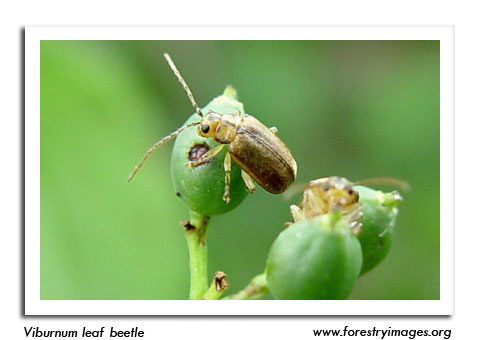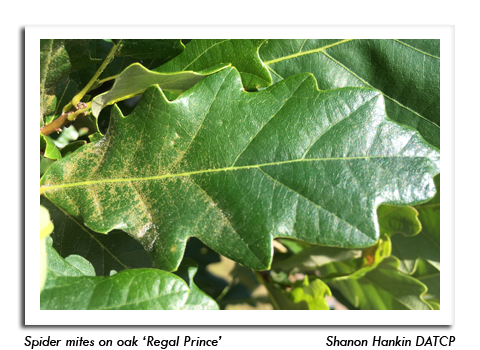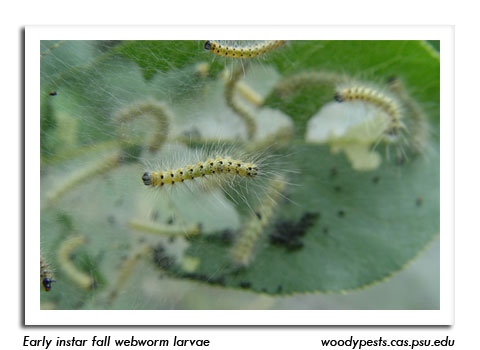
 |
|
|
Nursery & Forest
Volume 64 Number 15 Date 08/08/2019 VIBURNUM LEAF BEETLE - Adults of this relatively new pest to Wisconsin were observed on viburnums in a Milwaukee County garden center during the last week of July. This invasive defoliator has now been found in eight counties since 2009, including Iron, Kenosha, Milwaukee, Ozaukee, Walworth, Washington, Waukesha, and Winnebago. As its name suggests, the viburnum leaf beetle (VLB) feeds exclusively on viburnums, completing one generation per year beginning with egg hatch in May. This pest is particularly damaging because successive defoliation by both the larvae and adults can kill healthy plants after 2-3 years of heavy infestation. Effective control of VLB is important for protecting the health of native Wisconsin viburnums. DATCP is recommending timely chemical treatment (systemic and/or contact insecticides) to prevent the further spread of VLB in the state. Additional information can be obtained by contacting DATCP Nursery Program at 608-224-4572 or Elizabeth.Meils@wisconsin.gov. TWO-SPOTTED SPIDER MITE - Populations have been favored by the recent predominantly dry weather pattern. Inspections found mite damage on "Regal Prince" oak trees at a nursery in Dane County, and problems are likely to increase in August if dry conditions continue. Spider mite damage appears as stippling or speckling on leaves and may also include a fine webbing on the plant. Heavily infested plants turn completely yellow and stop growing. Although the mites are difficult to observe without magnification, they can be detected by gently shaking infested foliage over a sheet of paper where they can be more easily seen against the white background. Control options include using a stream of water to dislodge the mites from the plant, use of insecticidal oil or soap, employing natural predators including ladybugs, minute pirate bugs, predatory thrips or predatory mites, or a miticide application. Since spider mites thrive in dusty conditions, rinsing tree branches and keeping bare patches of ground lightly moist to reduce flying dust can help with control on tree farms and in orchards. PHYLLOSTICTA NEEDLECAST - This fungal blight which causes noticeable browning of interior needles in mid-summer was found on concolor fir trees in Rock County. Pycnidia or fruiting bodies visible to the unaided eye will develop on affected needles in late summer to early fall. Information on this disease is not widely available, but its development is thought to be caused by environmental parameters similar to other needle blight diseases of conifers, such as high humidity and limited air flow. Management includes increasing tree spacing, weed control, and preventative fungicide treatment. FALL WEBWORM - Nests have become more common on nursery stock since mid-July. The larvae inside are pale yellow with blackish lateral spots. Mature caterpillars develop tufts of silky hairs and are about one inch long. The fall webworm is a native species that feeds on over 120 different species of deciduous forest, shade, fruit, and ornamental trees, but avoids conifers. Manual removal of the webs is the preferred form of control. -- Shanon Hankin, DATCP Nursery Inspector 




|
|
|